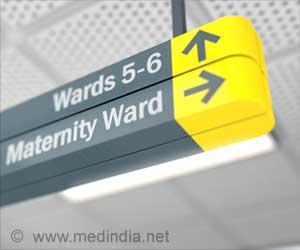
In Goa, there was a spike: the percentage of institutional delivery rose from 96.9% to 99.7% in NFHS-5 over a five-year period.
Nagaland had the lowest percentage of births in institutions. However, the percentage increased from 32.8% in NFHS-4 to 45.7% in NFHS-5.
Advertisement
Institutional delivery increases were seen in the nine targeted states of Bihar, Uttar Pradesh, Uttarakhand, Madhya Pradesh, Rajasthan, Jharkhand, Odisha, Chhattisgarh, and Assam. Madhya Pradesh was in first place with a 64.5% point increase. Nearly half of India’s population, more than 60% of maternal deaths, 70% of infant mortality, and 12% of all maternal deaths worldwide occur in these states.
All of the North-eastern states, with the exception of Sikkim, lagged behind southern states in rural institutional deliveries. All states except Kerala displayed an increase in the percentage of institutional deliveries in rural areas.
In most states, the proportion of institutional births was on an average higher in metropolitan regions. However, the institutional birth rate in rural regions was slightly higher in Kerala and Goa(2✔ ✔Trusted Source
Vital Stats National Family Health Survey 5
Go to source).
The average IMR for the country is 32 per 1,000 live births, with an average of 36 deaths in rural and 23 in urban areas.
The strongest performers were Sikkim, Jammu & Kashmir, Goa, and Assam, all of which saw a sharp decline in the neonatal mortality rate (NMR), infant mortality rate (IMR), and under-five mortality rate (U5MR).
Meghalaya, Tripura, Andaman & Nicobar Island, and Manipur all had increases in all three types of child mortality.
Of the 22 states and union territories surveyed, Bihar had the highest prevalence of NMR (34), IMR (47), and U5MR (56), whereas Kerala had the lowest death rates.
In the previous five years, Maharashtra’s child mortality rate stayed steady(3✔ ✔Trusted Source
Institutional deliveries on the rise across most states, shows NFHS-5 report
Go to source).
Institutional births in India have had a substantial increase from 79% in NFHS-4 to 89% in NFHS-5 at all-India Level. IMR is still high at 32 per 1,000 live births NFHS-5 from 41 per 1,000 live births in NFHS-4.
In-spite of higher institutional births in India, the mortality rates are still on the rise only. It is challenging to put a number on the quality needed to increase survival after institutional birth and to characterize the possible effects of health system quality on new-born survival.
Inadequate referral systems, lack of essential interventions during antenatal care visits, and designated delivery facilities unable to provide basic obstetric emergency care are just a few of the care gaps that studies have shown exist throughout pregnancy and during delivery.
READ RELATED: Robbie Coltrane Height, Weight, Age, Facts, Biography
Other gaps include a lack of basic equipment at public primary facilities, low adherence to clinical guidelines in delivery care and disregard for crucial services like postnatal care have been observed by clinicians during the course of care.
Initiatives Taken by the Government to Support Institutional Delivery in India
Janani Suraksha Yojana (JSY):
which guarantees a direct financial pay-out if a woman gives birth at a hospital rather than at home, the central government initially encouraged institutional deliveries in 2005.
Janani Shishu Suraksha Karyakram (JSSK) or Anani Shishu Suraksha Karyakram:
In June 2011, the Indian government introduced JSSK. It is a project to offer totally free and cashless services to expectant mothers, as well as standard deliveries, caesarean sections, and ill new-borns (up to 30 days after birth), in government health facilities in both rural and urban areas.
Pradhan Mantri Surakshit Matritva Abhiyan (PMSMA):
Launched in June 2016, aims to prevent and treat anemia by focusing on conducting special AnteNatal Check-ups (ANC) on the ninth of every month with the assistance of medical authorities.
PMMVY or Pradhan Mantri Matru Vandana Yojana:
With effect from the first of January 2017, it is a maternity benefit programme being implemented in all districts of the nation.
Program LaQshya:
LaQshya (Labor Room Quality Improvement Initiative) aimed to raise the standard of care provided in maternal operating rooms and labor rooms in public health facilities.
Poshan Abhiyaan:
With a time-bound approach, Poshan Abhiyaan seeks to enhance the nutritional status of children (0-6 years), pregnant women, and lactating mothers(4✔ ✔Trusted Source
Status of IMR and MMR in India
Go to source
).
To ensure a safe delivery, programmes that promote institutional birth are not only enough.
Way Ahead
A holistic approach is required. Institutional delivery incentive programmes alone will not guarantee a safe birth. To overcome infrastructure and human resource limitations, a comprehensive solution is required.
The remaining gaps could be filled in a fairly short period of time with an infrastructure development strategy centred on the actual patterns of use.
In order to make a perceptible difference, the workforce responsible for carrying out the various government programmes must be strengthened.
The foundation of government programmes is made up of accredited social health activists (ASHA) and auxiliary nurse midwives, but they are under tremendous strain.
The qualifying requirements for such programmes need to be broadened because they currently exclude those who really need them.
Some programmes are only available to mothers who are 19 years old or older, some are only for the first child, and some demand proof that a family is living below the poverty level.
The most vulnerable person is an 18-year-old pregnant lady who lives in poverty, but she would not qualify for many programmes.
Monitoring the program is required. In order to effectively monitor the scheme’s outcomes and determine how good the programme actually is, an appropriate institutional delivery model needs to be identified.
References :
- National Family Health Survey (NFHS-5) – (http://rchiips.org/nfhs/NFHS-5Reports/NFHS-5_INDIA_REPORT.pdf)
- Vital Stats National Family Health Survey 5 – (https://prsindia.org/policy/vital-stats/national-family-health-survey-5)
- Institutional deliveries on the rise across most states, shows NFHS-5 report – (https://www.downtoearth.org.in/blog/health/institutional-deliveries-on-the-rise-across-most-states-shows-nfhs-5-report-74813)
- Status of IMR and MMR in India – (https://pib.gov.in/PressReleaseIframePage.aspx?PRID=1796436)
Source: Medindia
Source:








